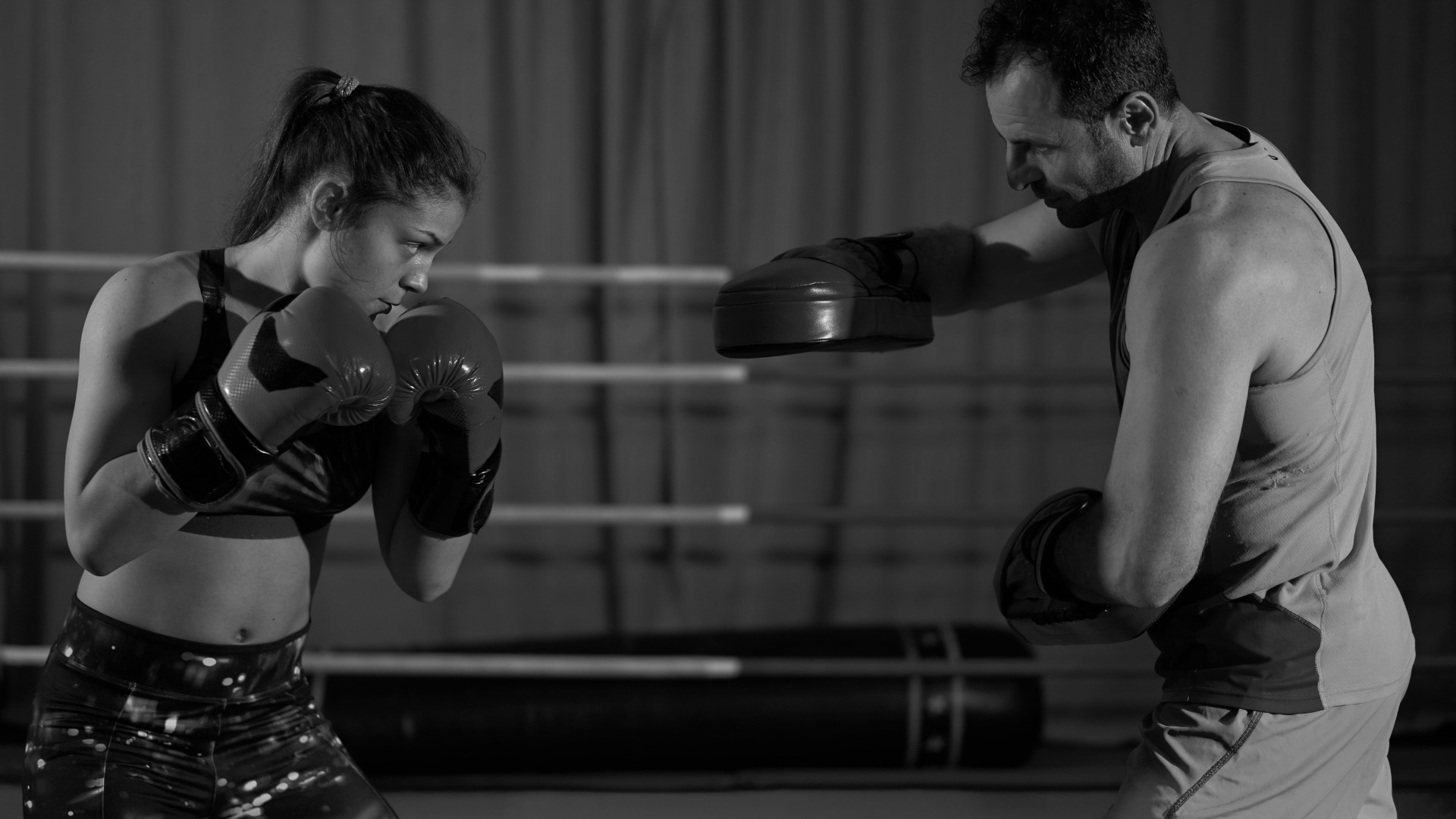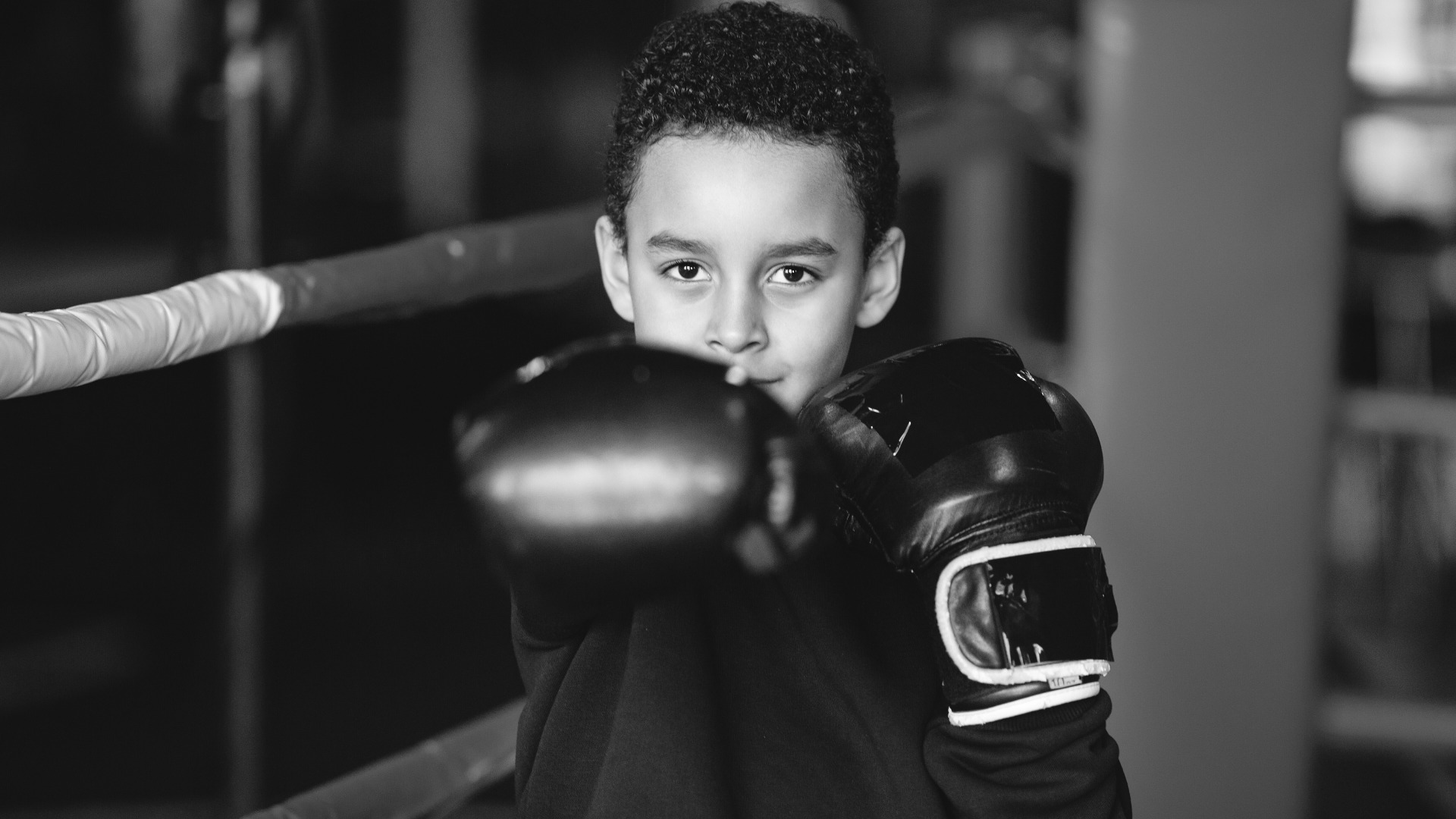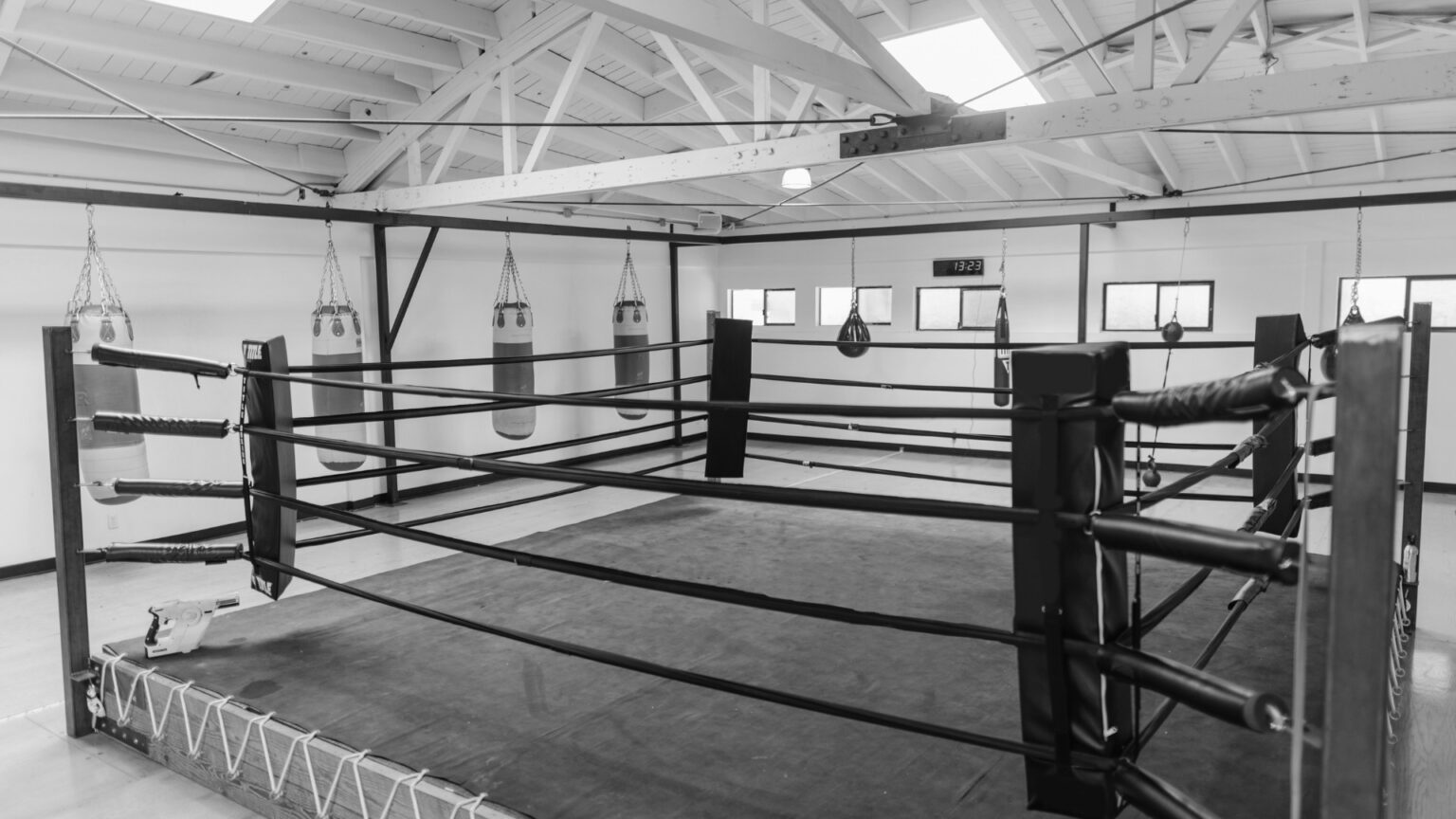
When deciding between a Muay Thai gym and a boxing gym in 2025, your choice depends on your goals, interests, and preferred training atmosphere. These gyms cater to different disciplines, and understanding their unique offerings is crucial to making the best decision.
Both Muay Thai and boxing gyms have rich traditions and deeply rooted communities, yet they differ significantly in technique, culture, and training focus. Here, we’ll break down the key differences to help you choose the gym that aligns with your personal goals.
| Feature | Muay Thai Gym 🥋 | Boxing Gym 🥊 |
|---|---|---|
| General Culture | Most Muay Thai gyms/training are team-based with designated skilled pad-holders as teammates. Familial with a very healthy female-friendly vibe. People talk about Muay Thai culture and are generally friendly and supportive while being tough. | Most gyms center around a head coach with mitt holders being trained coaches. Very tribal with individual progress supported by a group vibe. Tends to be way more fitness-centric with fewer women, but female-friendly. Talking about training hard and general motivation is common. |
| Training Focus | Technique, power, lots of hand-fighting–clinching | Conditioning, endurance, speed, physical fortitude |
| Sparring Style | Can be experimental, light, playful & technical, with varied intensity | Harder, more strategic and personal, intense, full-contact mostly |
| Best For | MMA fighters, kickboxers, self-defense seekers | Boxers, self-defense, fitness enthusiasts |
| Common Injuries | Bruised shins, knee strains, hip dysfunction and bursitis | Head trauma is unlikely but certainly possible over many many years, shoulder pain |
| Footwear | Barefoot training | Boxing shoes preferred |
| Bag Training | Banana bags, teardrop bags, heavy bags | Heavy bags, speed bags, double-end bags and way more |
| Coach Style | A village. Partner-based, very close contact, grappling, hands-on | Mentorship, highly personal and motivational coaching |
| Fitness Level | Good for all ages, lower impact on joints, running cardio is essential but less emphasized—”do more muay Thai” spirit | Much higher youth and teen engagement, high cardio, heavy fitness culture—running is almost an unspoken requirement |
| Self-Defense | More effective in close, clinching/grappling situations | Effective for striking & head movement |
| Weight Training Culture | Less emphasis on weights, more bodyweight | Weight training heavily incorporated |
| Gym Environment | Traditional, disciplined, communal, large tribal ties sometimes, extremely female-friendly | Gritty, hard-working, small-to-medium tribe size, fitness-based, fewer women but female-friendly |
Muay Thai, known as the “Art of Eight Limbs,” is Thailand’s national sport and a centuries-old martial art. It incorporates punches, kicks, knees, and elbows, making it one of the most dynamic and versatile striking disciplines.
Muay Thai originates as a defense system for the Thai military, and today it is revered worldwide for its balance of tradition and effectiveness. Training in a Muay Thai gym immerses you in a community that values respect, technique, and mindfulness. When I learned at first, bowing in and bowing out where expected customs as we said, “Sawasdee krap.” At another school, we would chant the founder, Sityotdang’s name once with a clap, while looking at his picture, to sign out of class.
Unlike boxing gyms, which can be more physically intense, Muay Thai gyms compete practitioners of all ages and skill levels.
The Muay Thai community is inclusive, supportive, and focused on skill development. Sparring is can be playful and light, emphasizing technique over brute force and other times brutal and relentless. This makes Muay Thai a great option for individuals seeking a balance between fitness and martial arts.
Muay Thai gyms focus heavily on technique, body awareness, and balance. Training sessions typically include:
Clinching drills: Mastering grappling and close-range fighting techniques.
Kicking and kneeing: Developing power and precision with your legs.
Thai pad work: Learning to deliver strikes with accuracy while also holding pads for your partner.
Sparring in Muay Thai is less aggressive compared to boxing at times and amateur fights can be medium-intense-sparring sessions. This is never the case in boxing though knockouts might be discouraged. Fighters engage in controlled exchanges to reduce the risk of injury, allowing for consistent practice. This lighter approach is perfect for building confidence and honing skills without overexertion.
Muay Thai gyms boast a wide variety of specialized equipment, including:
Heavy Bags: Typically longer and softer than boxing heavy bags, ranging from 6 to 7 feet in height. Banana bags, used specifically for low kicks and knee strikes, weigh between 100-150 pounds.
Thai Pads: Essential for training kicks, knees, elbows, and punches. These thick, firm pads allow practitioners to develop power while training with a partner.
Belly Pads: Worn by pad holders to absorb body shots and knee strikes, allowing for more dynamic training sessions.
Shin Guards: Necessary for sparring to protect against the high impact of repeated kicks.
Focus Mitts: Used for refining hand speed and boxing technique within Muay Thai training.
Kick Shields: Thick, dense pads used for absorbing powerful roundhouse kicks and push kicks.
Jump Ropes: Integral for footwork and cardiovascular conditioning. Thai ropes are known to be two pounds compared to conventional jump ropes which are less than three-quarters of a pound.
Muay Thai training is traditionally practiced barefoot, which enhances balance, strengthens foot muscles, and improves proprioception. Unlike boxing, which utilizes different shoes for training and competition, Muay Thai practitioners develop stability and control through direct contact with the ground. The lack of footwear also allows for seamless execution of pivoting movements, essential for effective kicking and kneeing techniques.
Heavy bags for power kicking drills.
Banana bags for low kicks and knee strikes.
Belly pads and shin guards for protection.
Thai pads for versatile striking drills.
The gym layout often includes open spaces for clinching and multiple heavy bags for individual practice. Clean, modern facilities are increasingly common, especially in Western countries.
🥊 My two favorite Boxing Gloves – Raja Boxing All Leather ($99) | Fairtex (includes 10% off!) ($89+)

Boxing, often referred to as the “Sweet Science,” is one of the oldest and most respected combat sports. It focuses solely on punches, footwork, and head movement, creating a discipline that prioritizes precision, endurance, and strategic offense.
Boxing has a deep-rooted history in the United States and Europe, with an amateur system dating back over a century. The structured path from amateur to professional boxing provides clear development opportunities. Boxing gyms have historically been working-class training hubs, offering mentorship, structure, and a sense of discipline to members.
The boxing community is communal and values hard work and respect. Sparring is intense and competitive, designed to test a fighter’s durability and mental toughness.
Boxing gyms focus on athletic conditioning, technical precision, and repetition. Typical training includes:
Shadowboxing – Developing fluid movement and form.
Heavy bag drills – Enhancing punching power and endurance.
Mitt work – Refining accuracy and speed with a coach.
Roadwork – Running 2–5 miles daily to build endurance and mental resilience.
Defensive techniques – Mastering slips, parries, and footwork to avoid incoming strikes.
Boxing sparring is often more intense than Muay Thai sparring, reinforcing resilience and durability under pressure.
Boxing gyms utilize specific equipment to optimize striking efficiency and endurance:
Standard Heavy Bags – 80-150 lb bags for improving punching technique and endurance.
300-Pound Bags – Extra-heavy bags for advanced power training.
Uppercut Bags – Angled bags designed to refine close-range power shots.
Slip Balls – Suspended bags for training head movement and defensive reflexes.
Double-End Bags – Tethered bags that enhance precision, speed, and counterpunching ability.
Speed Bags – Improving hand-eye coordination and rhythm.
Boxing Rings – Essential for sparring, footwork drills, and controlled fight simulations.
Boxers also incorporate weightlifting into training, focusing on explosive power and muscular endurance. Muay Thai gyms, in contrast, prioritize bodyweight exercises and clinching drills over traditional weightlifting.
🥊 My two favorite Boxing Gloves (my affiliates also) – TITLE Pro-Mex ($99) | Cleto Reyes ($250+)

| Feature | Muay Thai Gym | Boxing Gym |
|---|---|---|
| Striking Techniques | Punches, kicks, knees, elbows | Punches only |
| Community | Inclusive, supportive, technique-driven | Intense, gritty, fitness-focused |
| Equipment | Thai pads, belly pads, shin guards | Heavy bags, speed bags, mitts |
| Sparring Style | Light and playful | Intense and competitive |
| Fitness Focus | Proprioception and balance | Conditioning and endurance |
Women are increasingly drawn to Muay Thai gyms and boxing gyms, as both offer self-defense skills, confidence-building, and elite-level fitness.
Muay Thai gyms are particularly welcoming to women, often offering women-only classes and a strong community focus.
Boxing gyms have historically been male-dominated, but many now provide inclusive spaces where women can excel in conditioning, self-defense, and competition.
Both disciplines develop agility, endurance, and technical skill, making them excellent choices for women looking for empowerment and fitness in 2025.

For those seeking to compete, choosing the right gym can define their fighting career.
Boxing gyms offer a clear amateur-to-professional pathway, with a structured system governed by organizations like USA Boxing.
Muay Thai gyms provide a versatile striking foundation, crucial for both Muay Thai and MMA competition.
Competitive boxers often spar harder and focus heavily on head movement and power punching, whereas Muay Thai fighters must train for knees, elbows, and clinching. The extra “weapons” in Muay Thai and the potential for training damage often limit the intensity of sparring. Traditionally, Muay Thai sparring can be light and free—allowing athletes to experiment with many movement patterns.
If your goal is MMA, training at a Muay Thai gym first may be beneficial, as it covers a broader range of striking techniques.
Many former athletes from sports like football, wrestling, soccer, and basketball transition to combat sports for discipline, challenge, and conditioning.
Boxing emphasizes explosive speed, reaction time, and conditioning, which appeals to ex-sprinters, runners, football players, and wrestlers.
Muay Thai focuses on balance, coordination, and lower-body engagement, making it a strong option for soccer players, martial artists, casual intramural players, and gymnasts.
Both options offer structured training and a competitive outlet, ensuring that former athletes can keep their competitive edge sharp.
For those seeking intense, full-body conditioning, both boxing and Muay Thai deliver incredible results, but in different ways:
Boxing gyms provide high-intensity training with a heavy focus on footwork, total-body agility, and endurance cardio.
Muay Thai gyms incorporate kicking, knee strikes, and clinch work, activating the entire body with more mobility and explosive training.
While boxing is arguably more intense in long-term cardio output, Muay Thai involves dynamic movements that build functional power and strength.
MMA fighters need both boxing and Muay Thai skills, but which one to start with depends on your fighting style.
Boxing gyms develop sharp hands, elite footwork, and defensive skills, which are essential for MMA stand-up striking.
Muay Thai gyms teach a broader range of striking techniques, including kicks—teeps, round, low, side kicks—knees, and elbows, giving MMA fighters more tools for offense.
Many successful MMA strikers have a base in Boxing first, as it covers a wider range of stand-up fighting skills before Muay Thai refinement.
Many people train in combat sports for self-defense. Which is better?
Boxing gyms train hand speed, head movement, and precision striking, which can be highly effective in real-world situations.
Muay Thai gyms offer clinching, knee strikes, and leg kicks, which provide more ways to neutralize an opponent.
If your goal is street self-defense, Muay Thai is arguably more effective, as it trains for close-range combat and multiple forms of striking.
Muay Thai and boxing both offer training opportunities for older athletes, but they cater to different needs:
Muay Thai gyms are often more accommodating to older trainees, as the training can be lighter, more technical, and controlled.
Boxing gyms can be more physically demanding, as sparring is often heavier, and training intensity is high.
If you are over 40 and new to combat sports, Muay Thai is a great choice because of its technical emphasis and lower impact sparring.

| Training Goal | Best Gym Choice | Why? |
|---|---|---|
| Women in Combat Sports | Muay Thai or Boxing | Both offer empowerment, self-defense, and elite fitness, with Muay Thai often being more inclusive. |
| Competitive Fighters | Boxing for a base and early, frequent competition, Muay Thai for afterward for complexity and scoring criteria | Boxing provides more structured pathways to pro fighting; Muay Thai offers diverse striking tools. |
| Former Athletes | Boxing for raw fitness, Muay Thai for explosiveness | Ex-sprinters and wrestlers thrive in boxing; soccer players and gymnasts excel in Muay Thai. |
| Fitness Enthusiasts | Boxing for cardio, Muay Thai for full-body training | Boxing is more intense in endurance; Muay Thai incorporates more explosive movement. |
| MMA Practitioners | Start with boxing, refine with Muay Thai | Muay Thai teaches kicks, knees, and clinching; boxing refines hands and footwork. |
| Self-Defense Seekers | Muay Thai for versatility and close-quarters defense, Boxing for precision | Muay Thai covers multiple striking ranges; boxing develops quick, precise punches. |
| Older Practitioners | Muay Thai | More technical, controlled, and adaptable for different fitness levels. |
Choosing between a Muay Thai gym and a boxing gym depends entirely on your goals, training style, and the kind of experience you want from combat sports.
If you’re looking for a full-body striking art that incorporates kicks, knees, elbows, and clinching, a Muay Thai gym will help you develop balance, coordination, and a well-rounded skill set. The technical and playful sparring environment makes it great for beginners and long-term practitioners alike.
If you prefer a discipline that emphasizes footwork, head movement, and the art of punching, a boxing gym is the way to go. With a strong culture of conditioning, high-intensity sparring, and deep history, boxing gyms are best for those who want to refine their hand speed, power, and endurance.
✅ Want to develop powerful kicks, clinching, and full-body striking? → Muay Thai Gym
Why? Muay Thai is a true full-body striking system, incorporating knees, elbows, kicks, and clinching—essential tools for both stand-up fighting and self-defense. If you want a balanced, multi-weapon approach that works at all ranges (long, mid, and close-quarters), Muay Thai is king.
✅ Want to master head movement, footwork, and explosive punches? → Boxing Gym
Why? Boxing is the best combat sport for developing fast reflexes, defensive movement, and knockout power. Unlike Muay Thai, where fighters take a more squared stance, boxers develop elite footwork, angles, and head movement to avoid strikes while delivering devastating counters. If you want to sharpen your hand speed, accuracy, and defensive instincts, boxing is the ultimate skill-builder.
✅ Want to become a well-rounded MMA fighter? → Start with boxing, then add Muay Thai
Why? Boxing gives you strong hands, footwork, and defensive movement, while Muay Thai adds kicks, elbows, and clinch control. Most elite MMA fighters start with boxing fundamentals before adding Muay Thai striking for a complete stand-up arsenal.
✅ Focused on fitness & cardio without getting hit? → Boxing Gym
Why? While both sports offer insane conditioning, boxing gyms are more structured for pure fitness training. Many gyms offer boxing-style HIIT classes where you hit the bags, do conditioning drills, and train like a fighter—without sparring. If you want a killer workout without full contact, boxing-based fitness programs are everywhere and deliver results fast.
✅ Want a more traditional, structured martial arts experience? → Muay Thai Gym
Why? Muay Thai is steeped in tradition, with a strong cultural identity built around respect, rituals, and progression through skill mastery. It’s a martial art first, and a combat sport second. If you want a disciplined environment that emphasizes technique over raw aggression, Muay Thai provides a structured, lifelong practice.
✅ Want to train in a gritty, no-nonsense, tough-as-nails environment? → Boxing Gym
Why? Boxing gyms have historically produced the toughest fighters on the planet. Many are blue-collar, workmanlike gyms where you train hard, spar hard, and develop an unmatched mental edge. If you want to grind, push limits, and learn from seasoned veterans, boxing gyms provide that raw, no-frills experience.
✅ Are you an older athlete looking for a combat sport? → Muay Thai Gym
Why? While boxing is high-impact and tough on the joints (constant head movement, explosive footwork, and repetitive impact to the head), Muay Thai offers more longevity. The sport allows for lighter sparring, a focus on technique, and a greater variety of movement patterns that reduce wear and tear. Many practitioners train well into their 50s and beyond.
✅ Looking for a gym where women feel comfortable training? → Both, but Muay Thai is often more welcoming
Why? Both sports have strong female participation, but Muay Thai gyms tend to have a more inclusive culture, with a focus on partner drills and technical sparring rather than hard-impact exchanges. That said, women’s boxing is exploding in popularity, and many boxing gyms now have women-only classes and tailored training programs.
No matter what, both gyms will push you mentally and physically—it’s about finding the right training style for YOU.
💡 Now that you know the differences between a Muay Thai gym and a boxing gym, it’s time to take action!
✔️ Looking for a gym near you? → Find the Best Muay Thai & Boxing Gyms Near You
✔️ Want to train at home? → Best Equipment for Home Boxing & Muay Thai
✔️ Not sure where to start? → Our Full Training Guide for Beginners
Recommended Gear for Your Training
🥊 Best Boxing Gloves – TITLE Pro Mex ($99) | Cleto Reyes ($180+)
🥊 Best Budget-friendly Muay Thai Gloves – Fairtex BGV14 ($109) | Venum ($60+)
👟 Best Shoes for Boxing – TITLE Boxing Shoes ($99) | Nike Machomai ($129)
Muay Thai provides a wider range of weapons (kicks, knees, elbows, clinching), making it more versatile in real-world self-defense situations. Boxing, however, is great for head movement, evasiveness, and precision punching.
Yes, and many MMA fighters do. However, boxing’s footwork is different from Muay Thai’s upright stance. Mastering one first will help prevent confusion.
Muay Thai has more areas of impact (shins, knees, elbows), but boxing involves repeated head trauma due to punches. Both sports carry injury risks, but boxing’s long-term head impact is often seen as riskier.
Boxing is faster-paced and more cardio-heavy, while Muay Thai offers a full-body workout. If you love running & conditioning, boxing is great. If you want total-body fitness & flexibility, Muay Thai is ideal.
Yes! Both sports welcome beginners, and many gyms offer beginner classes. The key is finding the right gym with proper structure and coaching.
coachjohanncscs.com only uses primary research and scholarly studies as references over secondary sites. Other references are primarily from reputable social media accounts of experts only in the fields of health, nutrition, sports science, physiology, psychology, and physical therapy.
Dawson, D.B. (2024). Embodiment and Meaning: Muay Thai in Different Cultural Contexts. University of Mississippi.
URL: https://egrove.olemiss.edu/southernanthro_proceedings/vol48/iss1/4/
Doherty, C.S., Fortington, L.V., & Barley, O.R. (2024). Rapid Weight Changes and Competitive Outcomes in Muay Thai and Mixed Martial Arts: A 14-Month Study of 24 Combat Sports Events. MDPI Sports Journal.
URL: https://www.mdpi.com/2075-4663/12/10/280
Brown, L., Domingos, S., & Doyle, G. (2022). The Effects of Olympic Weightlifting Derivatives on Muay Thai Roundhouse Kicking Performance. University of East London.
URL: https://repository.uel.ac.uk/item/8v6xq
Croom, A.M. (2022). Muay Thai, Psychological Well-Being, and Cultivation of Combat-Relevant Affordances. MDPI Philosophies.
URL: https://www.mdpi.com/2409-9287/7/3/65
Neumann, D., & Cornell, S. (2025). Martial Arts Crossed Over Into the Rest of My Life: A Qualitative Exploration of Australian Practitioners’ Experiences of Martial Arts and Combat Sports on Wellbeing. Wiley Journal of Community & Applied Social Psychology.
URL: https://onlinelibrary.wiley.com/doi/abs/10.1002/casp.70035
Nunes, J.P., & Mayhew, J.L. (2018). Effects of Muay Thai Training Frequency on Body Composition and Physical Fitness in Healthy Untrained Women. ResearchGate.
URL: https://www.researchgate.net/publication/320291084_Effects_of_Muay_Thai_training_frequency_on_body_composition_and_physical_fitness_in_healthy_untrained_women
Saraiva, B.T.C., Franchini, E., & Ribeiro, A.S. (2024). Effects of 12 Weeks of Functional Training vs. Muay Thai on Cardiac Autonomic Modulation and Hemodynamic Parameters in Older Adults: A Randomized Clinical Trial. Springer BMC Cardiovascular.
URL: https://link.springer.com/article/10.1186/s12872-024-04096-3
Croom, A.M. (2023). The Impact of Shadowboxing on the Psychological Well-Being of Professional Martial Artists. Springer Discover Psychology.
URL: https://link.springer.com/article/10.1007/s44202-023-00064-8
Harrison, D. (2023). The Effects of Traditional Boxing Drills on Cardiovascular Fitness in Amateur Athletes. International Journal of Combat Sports Research.
URL: https://ijcsr.org/boxing-drills-cardiovascular

What’s Inside the Nutrition Blueprint:
Plus: Use Our Macro Calculator!